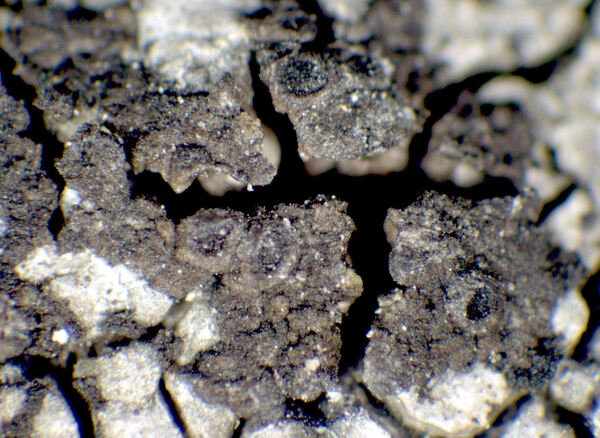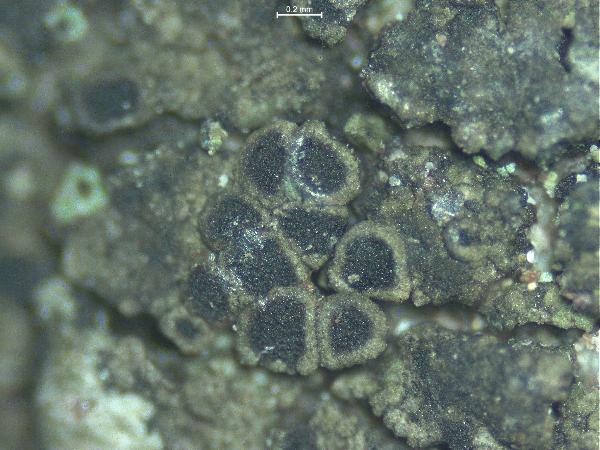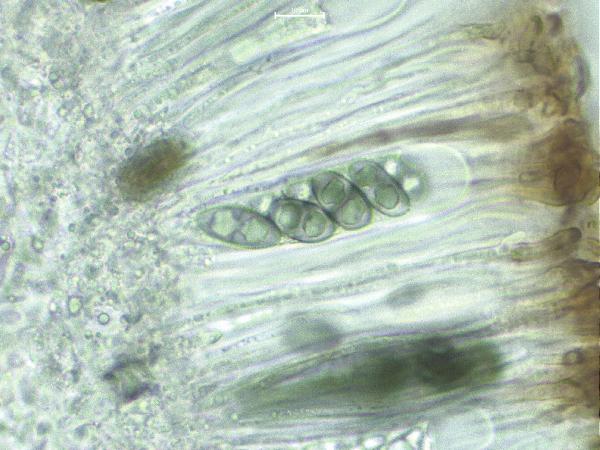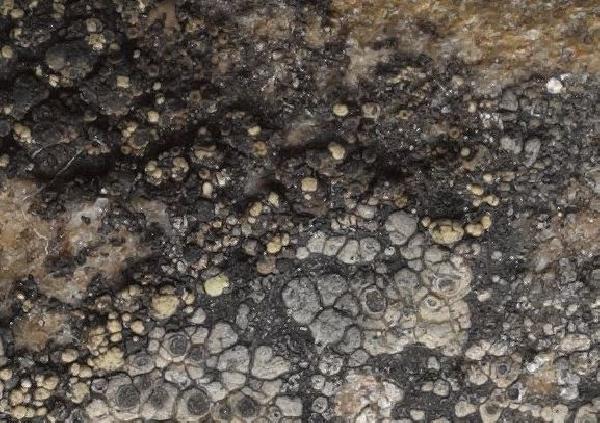Rinodina parasitica H. Mayrhofer & Poelt
Bibl. Lichenol., 12: 137, 1979.
Synonyms: Rinodina milvina var. amphibolitica Räsänen
Distribution: N - Frl (Tretiach & Hafellner 2000), VA (TO 1814). C - Sar.
Description: Thallus crustose, episubstratic, rather thick, forming small patches on the thalli of crustose silicicolous lichens, at first of contiguous, 0.1-0.2 mm wide granules, finally areolate-verrucose, sometimes delimited by a dark prothallus, the areoles up to 0.6-0.7 mm wide, grey-brown to usually dark reddish brown, dull. Apothecia lecanorine, abundant and often confluent, innate to sessile, 0.3-0.5(-0.7) mm across, with a dark brown to black, flat to convex disc and a thick, prominent, smooth to crenulate thalline margin; a raised parathecial ring is sometimes visible between disc and thalline margin. Thalline exciple 40-90 µm wide laterally, corticate, expanding in lower part; proper exciple colourless, 5-15 µm wide laterally, expanding to (10-)20-40 µm in upper part; epithecium reddish brown, K-; hymenium colourless, 70-100 µm high; paraphyses 1.5-2(-3) µm thick, the apical cells to 4-6 µm wide, immersed in a diffuse pigment; hypothecium colourless, 50-90 µm high. Asci 8-spored, clavate, the K/I+ blue tholus penetrated by a faintly amyloid apical cushion with parallel or diverging flanks, the wall K/I-, surrounded by a K/I+ blue outer layer, Lecanora-type. Ascospores 1-septate, brown, broadly ellipsoid, (13-)16-18(-21) x (7-)8-10(-11) µm, Physcia-type, sometimes becoming thin-walled (Physconia-like), with ornamented walls and thickened apical walls, the ontogeny of type A (apical wall thickening after septum formation). Pycnidia black, immersed in thallus. Conidia bacilliform, 3.5-4.5 µm long. Photobiont chlorococcoid. Spot tests: K-, C-, KC-, P-, UV-. Chemistry: without lichen substances.Note: an arctic-alpine species found on siliceous rocks in upland areas, often growing on the thalli of other crustose lichens; easy to overlook and certainly more widespread, at least in the Alps.
Growth form: Crustose
Substrata: rocks
Photobiont: green algae other than Trentepohlia
Reproductive strategy: mainly sexual
paras crustose lichens
Commonnes-rarity: (info)
Alpine belt: extremely rare
Subalpine belt: very rare
Oromediterranean belt: very rare
Montane belt: very rare
Submediterranean belt: absent
Padanian area: absent
Humid submediterranean belt: absent
Humid mediterranean belt: absent
Dry mediterranean belt: absent
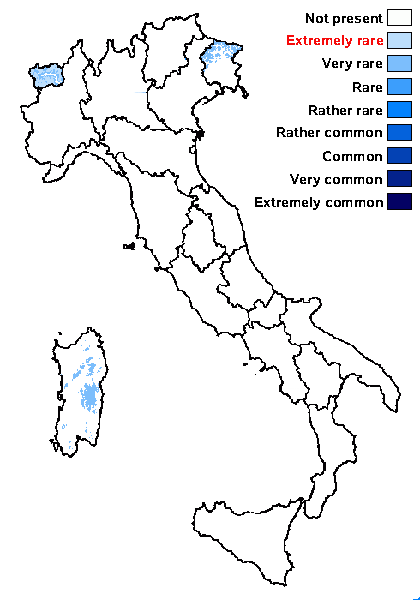
Predictive model
Herbarium samples
Growth form: Crustose
Substrata: rocks
Photobiont: green algae other than Trentepohlia
Reproductive strategy: mainly sexual
paras crustose lichens
Commonnes-rarity: (info)
Alpine belt: extremely rare
Subalpine belt: very rare
Oromediterranean belt: very rare
Montane belt: very rare
Submediterranean belt: absent
Padanian area: absent
Humid submediterranean belt: absent
Humid mediterranean belt: absent
Dry mediterranean belt: absent

Predictive model
| Herbarium samples |
 INDEX FUNGORUM
INDEX FUNGORUM
 GBIF
GBIF
 DOLICHENS
DOLICHENS
